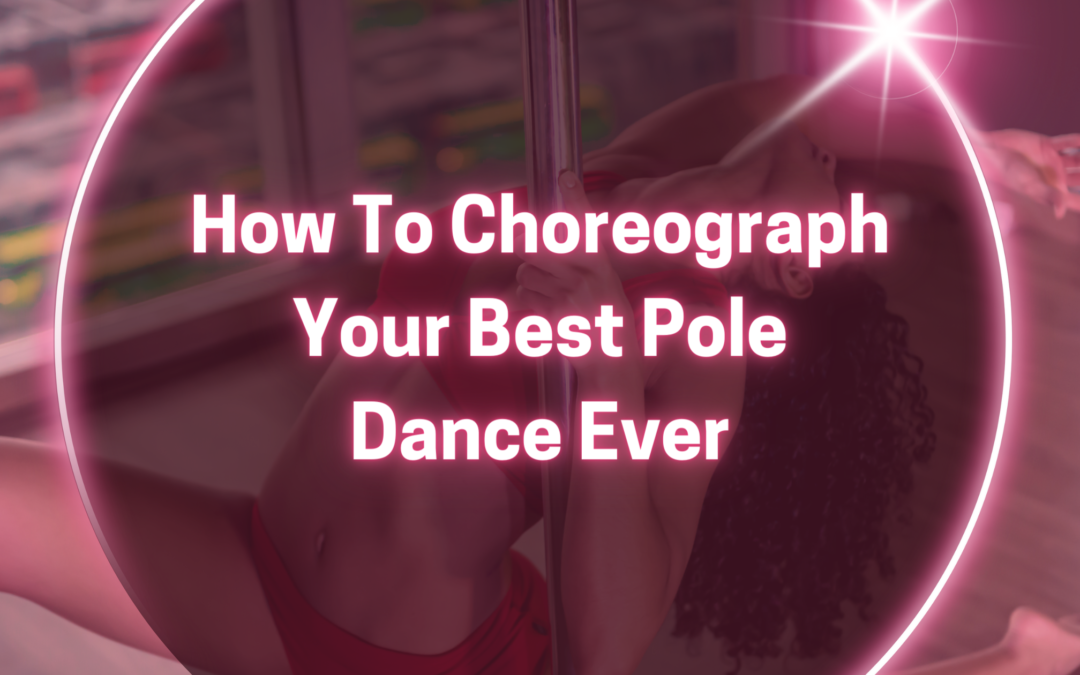I was teaching a private session this week. The lovely lady in question is preparing for her very first pole dancing competition. She wanted to improve her floor work, flow and overall performance (hair flicks and so on) so came to me for a spot of help.
However, it isn’t just technique that makes a pole routine great, so I thought, ‘Which of my performances was my best pole dance ever? And what about it made it ‘the best’ for me?’ I found myself continuously returning back to the same answers, things that I had found improved my routines immeasurably despite their simplicity.
Here are some of the effective tips I’ve found, put into practice they will help to you choreograph your best pole dance ever, I promise:
“Your transitions are your dance”
This concept is integral to routines, choreography and performance. So often we are obsessively focused on what tricks and moves we are putting in, that we don’t dedicate enough time to working out how me move between them. This is also what often sets apart a pole dancer who has just started out, and someone with a lot of performance experience.
Your transitions are the barely seen moments that people don’t even realise are there.
Some examples of transitions include:
How you position and place your hands. Do you need to move a hand to get into a position for a certain trick?
The way that you transfer your weight, and position your feet. If you need your feet to be braced in a certain stance, how are you going to get there?
Your body position up the pole. Maybe you are trying to think of a three trick pole combo, how are you going to smoothly transform from one trick to another?
Without smooth transitions your dancing can look messy, rushed, and unpolished. So it is so important to dedicate time to refining and creatively choreographing your transitions.
It isn’t just a case of ‘Well, I’ll just turn around and get into my shoulder mount position’… Each movement needs its own purpose. Each time you move on stage it needs to be beautiful, interesting or deliberate. So whether you are moving your feet into a set position, or you need to get to a certain part of the stage or pole, you need to choreograph it with purpose.
Think of ways that you can 1) make the movement economical and practical, and 2) make it visually interesting, or at least, make it an invisible addition that doesn’t stand out. Sometimes it may feel as though you are taking the long-winded route to get to the next move, but it will make your routine look noticeably more fluid.
For example:
At one point during our private my student was working on some chair choreo. She was going from a seated position on the chair, to a standing position facing the chair. This meant that she needed to turn around as she stood. Something as simple as crossing her feet at the ankles before she stood meant that when she did turn around the movement was fluid, economical and smooth. Because her ankles were crossed, she didn’t need to move her feet into position once she stood up. This isn’t a move people will notice when they watch her perform, but it will make a difference to the overall flow of the routine.
So, remember… next time you are working out how to get from one move to another, ask yourself ‘Is this beautiful and interesting? Is it deliberate and economical?’
“Give your choreography space to breathe”
Some of the feedback from my very first competition stated that I needed to ‘break away’ from my choreography, to show that I was enjoying myself and really in the performance. When you first start choreographing it is easy to jam-pack your routine with ALL OF THE MOVES! You want to show off all of the cool stuff you know, right? How will the judges know how awesome you are if you don’t show them every bad ass move you got? So, you plan out every moment of your song, choreographing moves to every musical change and beat, and putting in as much as you can. It is totally normal!
The problem with this is that you become so tied up in the choreography that it become a straight jacket to your performance. In stead of enjoying the moment you are in, you are so busy worrying about what comes next. How can I just pause and enjoy the moment when I have 5000 fonjis to perform, Peach?! Exactly!
Once I started cutting back and giving my choreography spaces to breathe I noticed a huge improvement in my quality of performance, and my ability to engage with the audience. You may end up performing fewer moves, but the ones that you do perform will have more impact, look cleaner, and leave a stronger impression on your audience. Of course, you don’t need to linger in every move, so make sure you are including varying pace changes to keep the choreography interesting.
For example:
Instead of popping move after the move in quick succession, have moments during your routine where you have a few more counts to transition between them, or a few seconds for you to hold a beautiful shape or pose. The feedback I got for my Dance Filthy performance said that they loved how I paused in a pose or move, so it just goes to show, something this simple does make a difference!
♥♥♥
What do you think would make your best pole dance ever?
These are two small pieces of advice that I offer anyone looking for some help on their choreography and routines, but what advice do you have? Are there any overlooked areas that you think people need to focus on?

